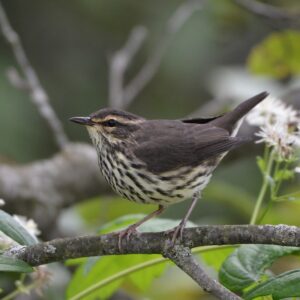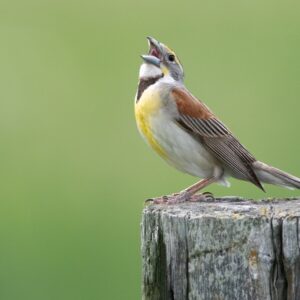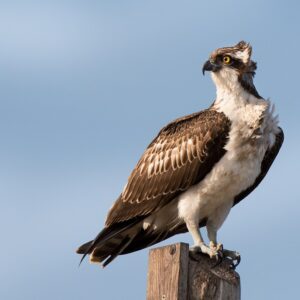Back for another year, Piping Plovers arrive and thrive at Sauble Beach, Ontario
We have been following the comings and goings of Piping Plovers at Sauble Beach for a few years now through the guest blog posts of Piping Plover volunteer guardians, Kim and Brendan Toews. This year, we received a diary of Plover observations that cover the past few months from the Toews and wanted to share their update with you on our blog.
[separator headline=”h2″ title=”Whistled “Peep lo” Field Notes:”]
[separator headline=”h3″ title=”10 May:”]
A returning pair of Piping Plovers (PIPL) arrived back at Sauble Beach. By the 12th, this pair had established a nest at the south end of the beach, but a storm surge (high wave surge) destroyed the nest. This pair went on to renest.
[separator headline=”h3″ title=”4 June:”]
Two pairs of Piping Plovers and two nests with each nest containing four eggs. Each nest has a large predator exclosure erected over it which allows the plovers to come and go, but keeps out predators. The 100m x 100m perimeter fences are erected at each nesting site to reduce disturbances to the plovers sitting on nests. Both adults participate in the incubation of eggs.
[separator headline=”h3″ title=”23 June:”]
As of 23rd, two eggs from the south nest hatched. Two downy Piping Plover chicks were mobile and roaming Sauble Beach with the adults closely guarding them. Within an hour of hatching and drying off, Piping Plover chicks, like other shorebirds, will leave the nest and forage for food – mostly insects and small crustaceans. The first few weeks after hatching, plover chicks are vulnerable to predation and if you spot them roaming the beach please be respectful and observe from a distance using binoculars, or cameras with high-powered zoom lenses. If volunteer monitors are on the beach, ask them for assistance.
[separator headline=”h3″ title=”4 July:”]
The north nest hatched. Four(4) tiny chicks and both adults roamed the beach. The plover’s sandy colouration provides excellent camouflage as it forages for insects and small crustaceans along the water’s edge and in small beach pools. Please remember that your presence can influence plover behaviour. Giving them space is important when small chicks are roaming on the beach. Lingering close to plover families may distract the adults from protecting the chicks from predators like gulls, crows, foxes and birds of prey.
[separator headline=”h3″ title=”6 July:”]
One north nest chick went missing over the weekend. Possibly predated by a Merlin, Ring-billed Gull, Herring Gull or Red Fox.
The two south nest chicks were banded by Canadian Wildlife Service. The healthy chicks weighed 22 and 23 grams. Band combinations are: standard metal on the left tibia, orange on the left tarsus, orange-blue on the right tarsus.
The female adult plovers will begin migrating south sometime in July,
Other nesting sites in Ontario this season are on Manitoulin Island and at Wasaga Beach Provincial Park.



